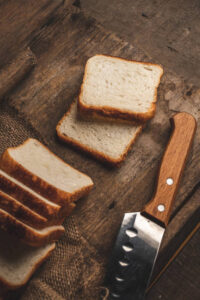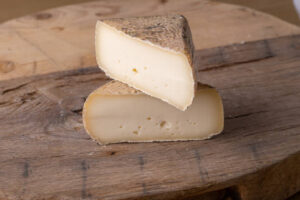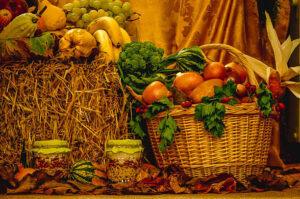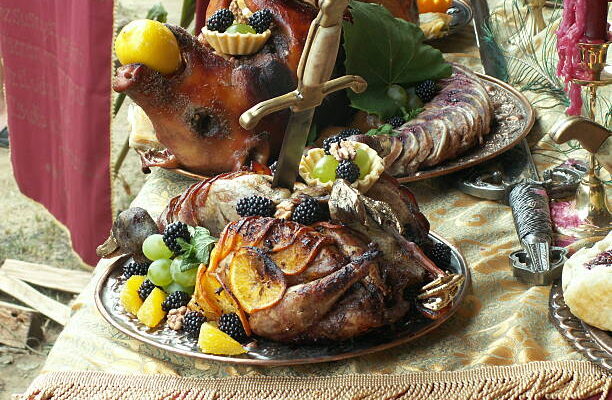The medieval period, spanning from the 5th to the 15th century, was a time of knights, castles, and intriguing cultural developments. Among the many facets of medieval life, the culinary landscape stands out as a fascinating realm of flavors and traditions. Exploring the common foods of this era provides a glimpse into the daily lives, social structures, and trade networks that shaped the medieval world.
-
Bread: The Staple of Life
 (Photo from iStock)
(Photo from iStock)
In medieval times, bread was the staple of every meal. However, unlike the standardized loaves found in today’s supermarkets, medieval bread came in various forms, from coarse and dark to lighter, refined varieties. The type of bread one consumed often reflected their social status, with the wealthy enjoying finely crafted white bread while the lower classes partook in heartier, whole-grain options. The process of bread-making itself was a laborious task, involving hand grinding of grains and meticulous baking in communal ovens.
-
Ale: Water’s Tastier Cousin
Water during medieval times was often unsafe to drink due to poor sanitation. As a result, ale, a fermented beverage made from malted barley, became the drink of choice. Ale was not only a safer alternative to water but also provided vital nutrients. From monasteries to royal courts, ale was a ubiquitous presence on medieval tables. The brewing process varied, with different regions boasting their unique recipes, creating a diverse spectrum of flavors.
-
Meat: A Luxurious Indulgence
Game meat, such as deer, boar, and rabbit, was popular among the nobility and aristocracy. For the lower classes, domesticated animals like chicken and pork were more common. The preservation of meat posed a significant challenge, leading to various techniques such as salting, smoking, and drying. The resulting cured meats not only extended shelf life but also added distinctive flavors to medieval dishes.
-
Pottage: The Hearty One-Pot Wonder
Pottage was a prevalent medieval dish, essentially a thick stew made from a combination of grains, vegetables, and meat. This one-pot wonder was a versatile and economical option for households across all social strata. The ingredients used in pottage varied based on availability and seasonality, showcasing the resourcefulness of medieval cooks. Herbs and spices were often added to enhance the flavors, transforming humble pottage into a delightful and nourishing meal.
-
Cheese: A Dairy Delicacy
 (Photo from iStock)
(Photo from iStock)
Cheese-making was a well-established practice in medieval times, with a wide array of cheeses produced across Europe. Monasteries played a significant role in refining cheese-making techniques, contributing to the development of unique regional varieties. Hard cheeses, like cheddar and gouda, were common, providing a valuable source of protein and fat. Cheese also served as a convenient way to preserve surplus milk, ensuring a steady supply even during lean times.
-
Fish: A Lenten Tradition
Given the religious significance of fasting during certain periods, fish became a crucial component of medieval foods. Coastal regions had access to a variety of fresh seafood, while inland areas relied on preserved or salted fish. Herring, cod, and salmon were among the popular choices, and fish often featured prominently in Lenten dishes. The importance of fish in medieval cuisine is evident in the numerous recipes and culinary manuscripts that provide intricate details on the preparation of fish-based meals.
-
Honey and Sweets: Nature’s Sweeteners
Honey was the primary sweetener in medieval times, used to add sweetness to both savoury and dessert dishes. Beekeeping was a common practice, and honey was not only enjoyed as a treat but also used for its medicinal properties. Sugar, a luxury imported from the Middle East, was scarce and expensive, making honey the go-to sweetener for most of the population. Desserts in medieval times often featured dried fruits, nuts, and, of course, honey.
-
Spices: The Priceless Commodities
Spices were highly prized during medieval times, not only for their ability to enhance flavour but also for their perceived medicinal properties. Cinnamon, cloves, pepper, and ginger were among the sought-after spices that traversed long and perilous trade routes to reach European markets. Spices were used generously in both savoury and sweet dishes, and their presence on the dining table was a status symbol. The demand for spices played a pivotal role in the exploration and expansion of trade routes during the Age of Discovery.
-
Fruits and Vegetables: A Tapestry of Flavours
 (Photo from iStock)
(Photo from iStock)
While fruits and vegetables were an integral part of medieval diets, their availability depended on factors such as geography, climate, and social class. Root vegetables like turnips and carrots were common staples, as they could withstand storage for extended periods. Apples, pears, and berries were enjoyed when in season, and dried fruits provided a burst of sweetness during the colder months. The variety of fruits and vegetables consumed reflected the diverse landscapes and agricultural practices of medieval Europe.
Conclusion:
Exploring the most common foods of medieval times unveils a rich tapestry of flavors, traditions, and social dynamics. From the hearty pottage enjoyed by peasants to the extravagant feasts of the nobility. Medieval cuisine was a reflection of the era’s complexities. The reliance on locally available ingredients, the ingenuity in food preservation, and the cultural exchange facilitated by trade routes all contributed to the diverse and vibrant food landscape of the medieval world. As we savour the remnants of these ancient flavors in modern times, we continue to connect with the people of the past through the universal language of foods.
The culinary legacy of medieval times, with its emphasis on hearty fare, tells a tale of resilience, creativity, and resourcefulness. In an era where the feudal system dictated social structures. Food became a common ground—a shared experience that transcended class distinctions. The significance of certain foods, from the humble loaf of bread to the exotic spices that adorned noble tables. Shaped not only the medieval palate but also the cultural identity of a bygone era. Unravelling these culinary threads illuminates the intricate tapestry of medieval life.




